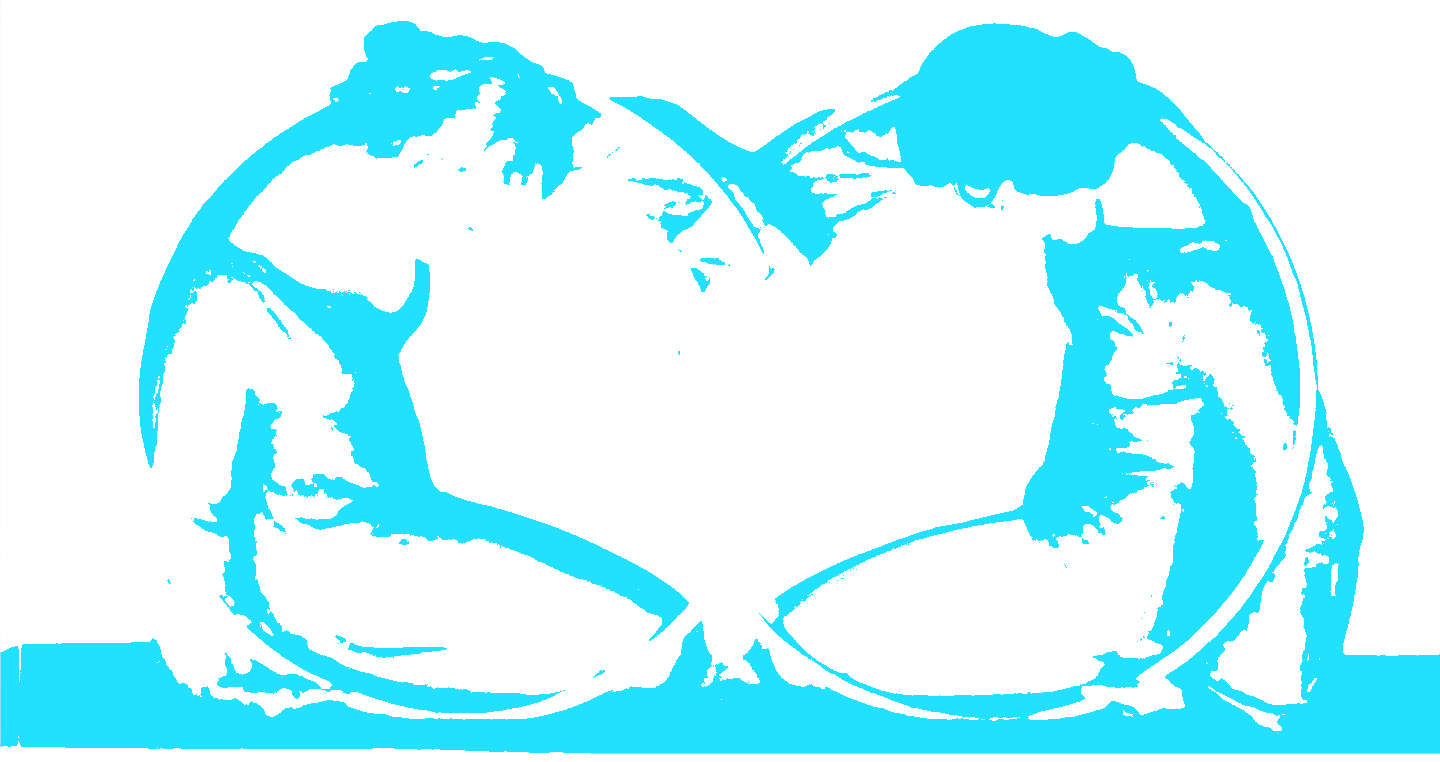
Amalgamation of Movements: Gertrud Bodenwieser by Kai Chun Chuang and Maria Shurkhal
Tanz und Videokonzept: Kai Chun Chuang, Maria Shurkhal
Movement Research: Rose Breuss
Video: Amin Ebrahimi
Video Assistant: Ebrahim Eskandari
Recorded in Studiobühne der Anton Bruckner Privatuniversität Linz
In 1935, Gertrud Bodenwieser (Vienna 1890 – Sydney 1957) wrote a curriculum for training in „artistic dance“ at the State Academy of Music and Performing Arts (now University of Music and Performing Arts Vienna), which emphasised the equivalence of compositional mastery of artistic dance with technical ability. Under the term amalgamations, dancers developed compositions of distinct, individual movement motifs that expressed choreographic themes in sometimes complex movement sequences.
In 1996, Bettina Vernon and Evelyn Yppen (both dancers in Bodenwieser’s dance group) studied etudes and dances by Gertrud Bodenwieser with students of what was then the Bruckner Conservatory (now the Anton Bruckner Private University).
Maria Shurkhal and Kai Cun Chuang created experimental videos that showcase the process of creation through the practice of movements by Gertrud Bodenwieser, including the Four Corner Steps, Swing Step, Big Swing, and Lamentation (Soft and Strong). Both the machine and the dance exercised a certain degree of agency to co-create a piece of work that only exists in digital space.
(Text by Rose Breuss)
Four corner steps
Four corner steps seem easy at first glance. They are one of the basic steps from Gertrud Bodenwieser. After reading a dance script of this step, I found it easy to understand the movement. However, during practice, it is not as easy as I initially thought, precisely because it is a simple step.
There are more details that the audience can see and that you need to be mindful of. I focus on how to switch my weight by imagining my toes guiding my whole body. The balance between your legs, from the ground to your head, must be maintained throughout the movement. Proper alignment is crucial from the end of one step to the beginning of the next.
(Text: Kai Chun Chuang)
Swing step
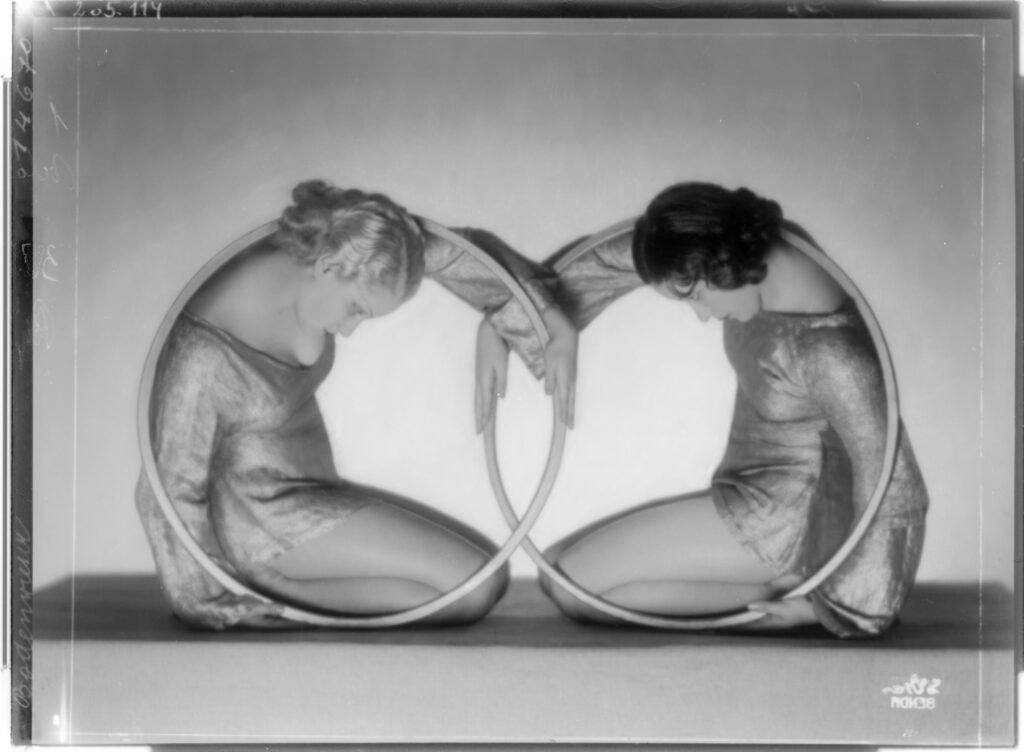
Image Archive of the Austrian National Library
After practicing the four corner steps, I realised that the body sensation is deeply rooted in the shifting of weight. The swinging steps prevent the impulse from merely pushing against the floor, instead allowing the movement to flow through the torso.
To add more texture to the movement, I imagine the wind brushing against my skin, like trees swaying in the air. This visualisation helps to create a sense of suspension between movements. The weight transfers into the ground through my feet, and then my feet push against the ground, creating a continuous and fluid motion.
(Text: Kai Chun Chuang)
Big Swing
The circle in the air, I relax my torso, allowing it to follow the weight of my arms. There are many different ways of swinging, such as swinging up and down, the pendulum swinging rhythmically, and flowers swaying in the breeze, all influenced by gravity.
When I execute the big swing, I focus on the falling and breathing. The momentum at the end of the suspension mirrors the start of the movement, with a tempo of 3/4 at 120 beats per minute, providing a specific time frame for the dancers. This concrete frame gives the dancers freedom within the movement, allowing for a dynamic and expressive performance.
(Text: Kai Chun Chuang)
Lamentation soft
Lamentation strong
Our emotions and movements are closely related. As performers, we often receive a story or concept before we delve into our characters. This video demonstrates how even the same movement can be affected by different moods or thoughts, significantly altering the result. Despite having the same ideas, Maria and I express them differently. Softness can be strong, and strength can be soft, creating a sense of suspense. To me, this is the most beautiful aspect of being a performer: presenting each unique identity.
(Text: Kai Chun Chuang)
Duet
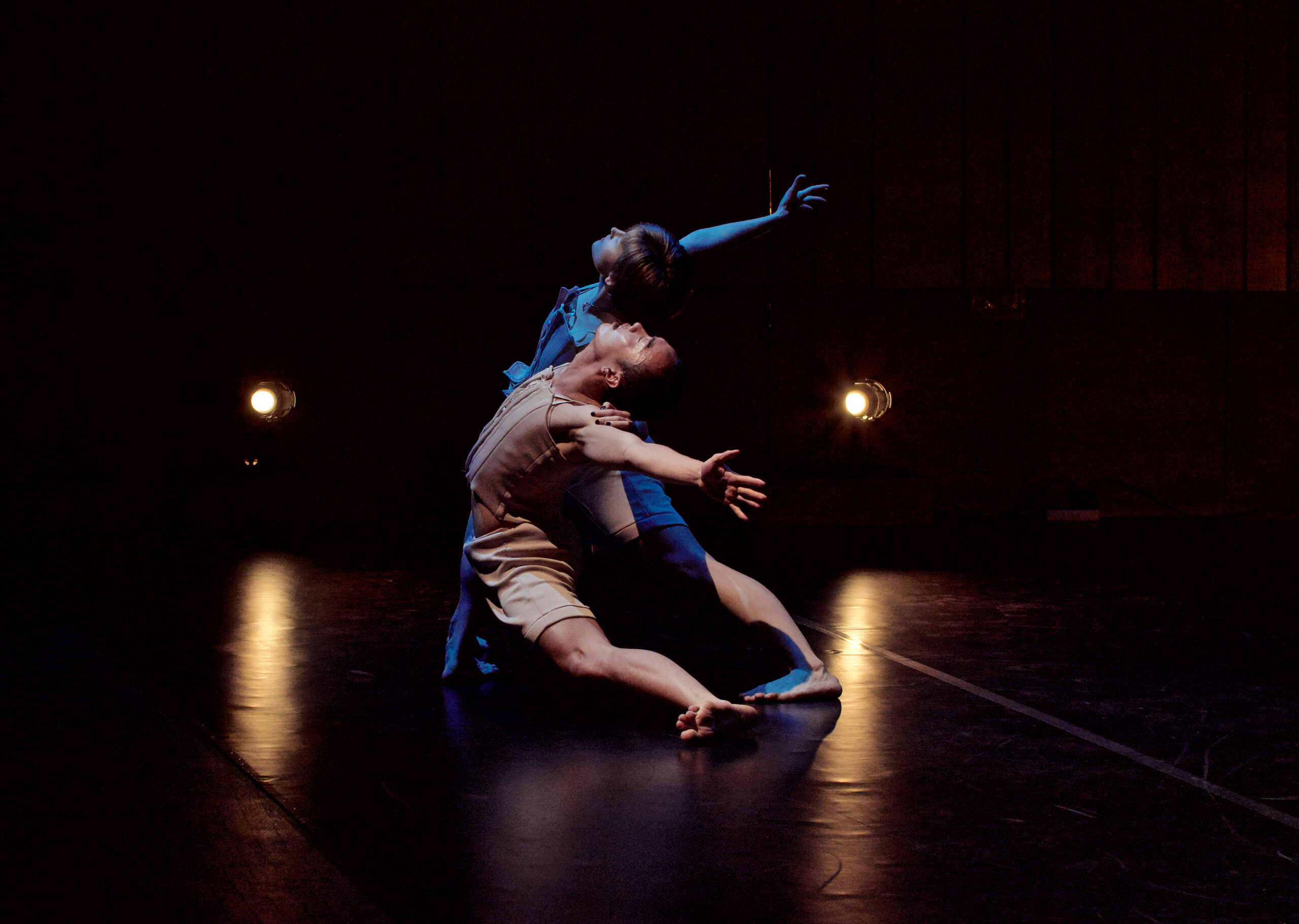
Tanz: Kai Chun Chuang, Maria Shurkhal
This video is an experimental work that showcases the process of creation through the practice of movements by Gertrud Bodenwieser, including the Four Corner Steps, Swing Step, Big Swing, and Lamentation (Soft and Strong).
We realised parts of this research in the project Choreographia[Inter]Austriaca in cooperation with Rose Breuss, a project we’ve already performed several times. Each performance, with different spaces and resetting, feels unique and special. The breaks between performances offer a chance to deepen our understanding of the movements. It’s always impressive how our movement memories persist after intensive working processes, allowing this language to stay in our bodies and evolve with new experiences.
(Text: Kai Chun Chuang)
Experimental
In this shot, we attempt to translate the concept of amalgamation into a digital dimension through an analog method. At the core of this experimentation is the notion of movement-matter-image conceptualized by Anne Sauvagnargues in her study on Deleuze and Guattari in the book Artmachines (Sauvagnargues, Verderber, Holland 2016):
„…the image is identically image and movement: it is no longer a support but a relation of forces and reactions.“
(Sauvagnargues, Verderber, Holland 2016, p.86)
The project movementmachine.org offered a great opportunity for exploration in the field of digitalisation and dance. In the process of work, the following issues came to the surface:
- Hierarchy between movement and image production
- Representational relation between image and movement
- Possible collaboration between dance and the machine
- Constellations of mediality between the movement material, the body, and the machine
- Agency and subordination between the engaged parties
We set a goal to create a setup that would allow non-representational collaboration between image and dance. The stable parts of the constellation were the (movement) material and the static positioning of the camera. The amalgamation took place through the relational space between the dance and the machine. The use of additional glass allowed us to create a space for plural individuation of the material, which was retrospectively composed by the eye of the camera in digital space.
…the image is a plural individuation of differential movements that compose fluctuating groupings whose power varies. Such a mode of individuation assumes no unity, no stable identity, but rather composes a relation of transitory, material forces.“
(Sauvagnargues, Verderber, Holland 2016, p.86)
Both the machine and the dance exercised a certain degree of agency to co-create a piece of work that only exists in digital space. Neither the observatory positioning of the camera nor the digital rework of the material would allow such a result. The plurality of space would also not be visible to an eye in real space and time.
„Defined in this way, the image is a composition of relation of forces and duration, affection and variation in power. A first result follows from this, which breaks with classical theories of the image as representation: the movement-image is strictly of the same order as matter; it proposes neither a second copy nor a physic translation. On the contrary, in the world where ‚image = movement‘, matter, the image, and movement are equivalent.“
(Sauvagnargues, Verderber, Holland 2016, p.87)
(Text: Maria Shurkhal)
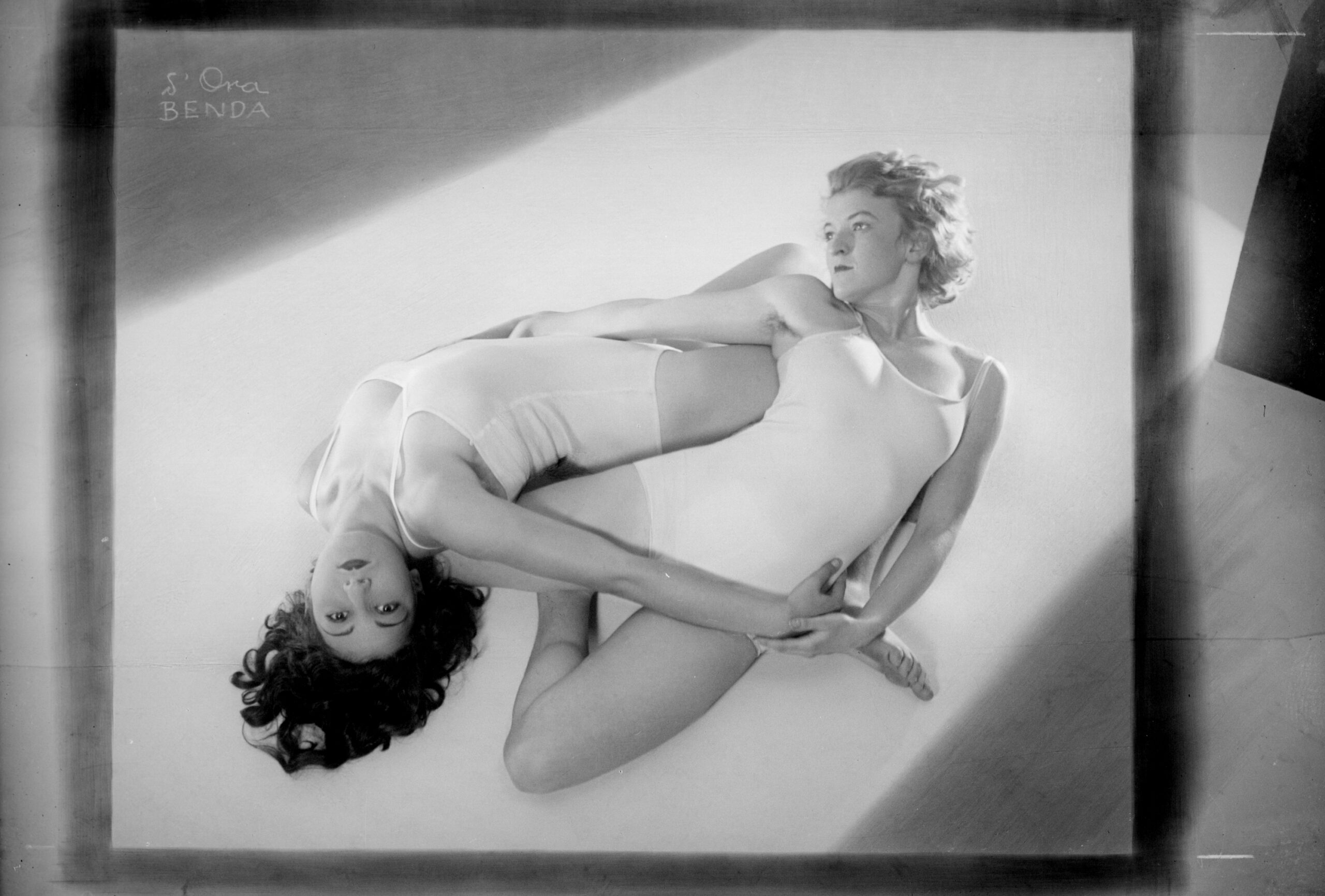
Image Archive of the Austrian National Library
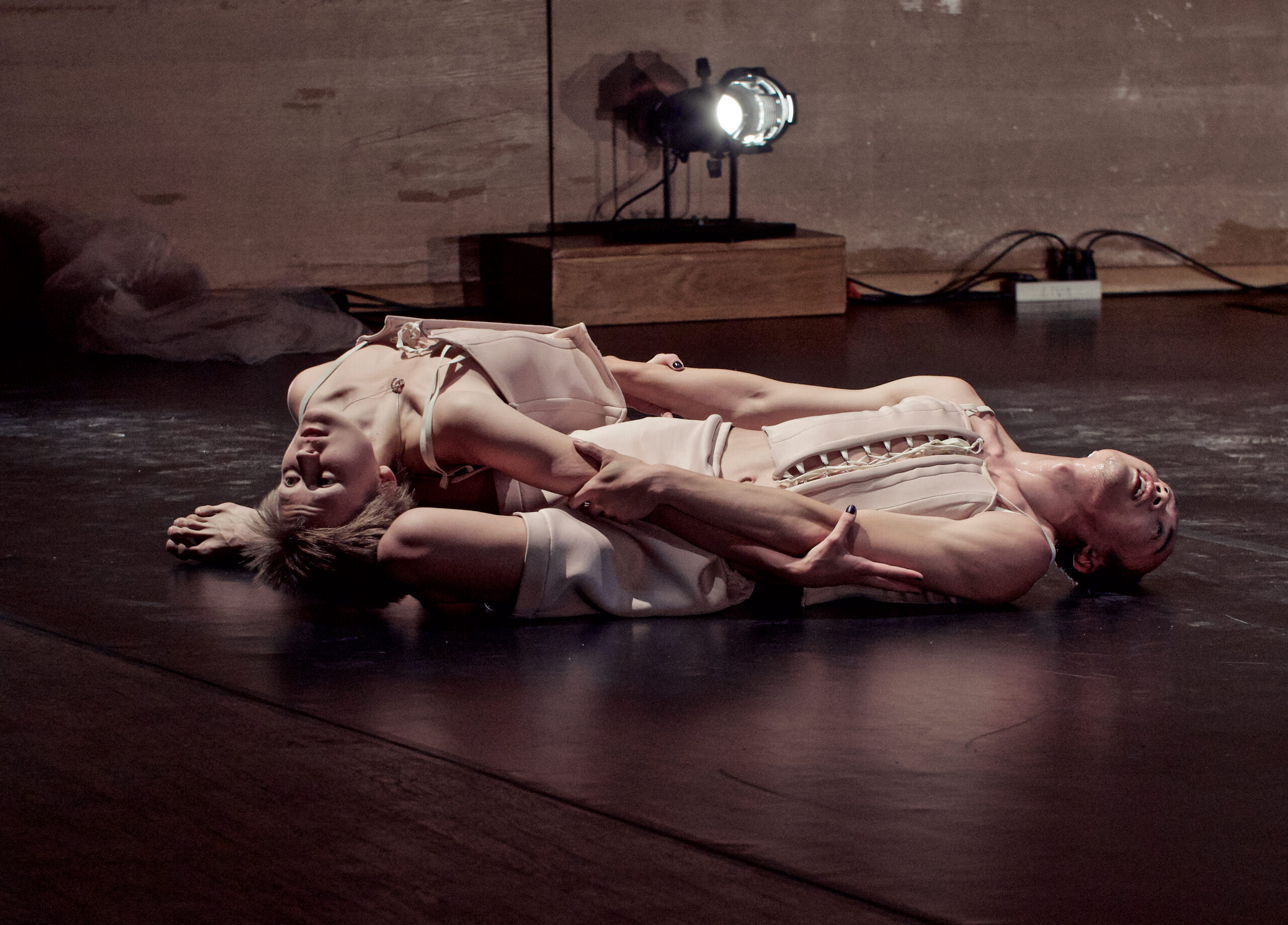
Tanz: Kai Chun Chuang, Maria Shurkhal
Kai Chun Chuang
Kai Chun Chuang, born in Taiwan, is a freelance artist based in Berlin. He obtained his master’s degree at Anton Bruckner University in 2019. Kai has worked intensively on various projects as a choreographer/performer/dancer such as in the Deutsche Oper am Rhein, Komische Oper Berlin, Volkstheater Rostock, Worldwide Berlin, Musikfabrik Köln, Fabien Prioville Dance Company Wuppertal, Westflügel Leipzig, Landestheater Linz, and Inter AKT Initiative Stuttgart. His piece [(SW)allow] which he choreographed and performed was selected as a finalist in the 2018 Solo Tanz Theater competition in Stuttgart.
In 2019 Kai performed in Decadance by Ohad Naharin and Ballroom by Shahar Binyamini in Festspielhaus St.Poelten. He was also assistant to choreographer Shahar Binyamini’s work with Opéra National du Rhin, Korea Art Project Bora. Additionionally, he is working with Austrian choreographer Rose Breuss in Choreographia [Inter]Austriaca.
Maria Shurkhal
Maria Shurkhal is a Ukrainian artist living and working in Vienna. She began her professional education at the Serge Lifar Kyiv Municipal Ukrainian Academy of Dance and continued her studies at the Anton Bruckner Private University in Linz. There she obtained a BA in Contemporary Dance and Dance Pedagogy, as well as an MA in Movement Research Studies and Dance Pedagogy. She has worked with institutions such as BRUT, WUK, Kulturhaus Brotfabrik, and Rose Breuss/Cie Off. Verticality, PUC collective, the National Austrian Team of Rhythmic Gymnastics, Hochschule für Gestaltung und Kunst FHNW, and Universität für Angewandte Kunst among others. She was a part of the Huggy Bears Mentoring Program 2020/21 and was selected for the scholarship program in the Field of Wiener Festwochen in 2021. Additionally, she is currently a dance researcher in the FWF project Atlas of Smooth Spaces at the University of Music and Performing Arts Vienna. Maria is a recipient of BKA Start Scholarship for Musik and Performing Arts in 2022, the BMKÖS Residency Scholarship in 2023, and the Working Scholarship in 2024 from the City of Vienna.
Amin Ebrahimi is an Iranian/Austrian videographer and filmmaker. He has completed his education at Fotoschule Wien and Lik Film Akademie Wien. At the moment he lives and works in Austria as a freelance photographer and videographer. He has worked with such artists and institutions as Ulduz Ahmadzadeh | ATASH عطش contemporary dance company, Laureen Drexler/ LOD Collective DE/SEMBLE Festival, BBC PERSIAN, BRUT, Semperdepot, Brückenfestival, Festival X and others.
Amin Ebrahimi
Amin Ebrahimi is an Iranian/Austrian videographer and filmmaker. He has completed his education at Fotoschule Wien and Lik Film Akademie Wien. At the moment he lives and works in Austria as a freelance photographer and videographer. He has worked with such artists and institutions as Ulduz Ahmadzadeh | ATASH عطش contemporary dance company, Laureen Drexler/ LOD Collective DE/SEMBLE Festival, BBC PERSIAN, BRUT, Semperdepot, Brückenfestival, Festival X and others.
Bibliography:
Breuss, Rose (2016): As if There Were a Negative in the Archive, Textures of Documentation: A choreographic score on Gertrud Bodenwieser, epodium.
https://www.epodium.de/e-zine, de-archiving movement #5
Bettina Vernon and Charles Warren (1999): Gertrud Bodenwieser and Vienna´s Contribution to Ausdruckstanz, New York. Haarwood Academic Publishers
Sauvagnargues, A., Verderber, S., & Holland, E. W. (2016). Artmachines: Deleuze, Guattari, Simondon. Edinburgh University Press.
http://www.jstor.org/stable/10.3366/j.ctt1bh2jvt
Further links:
https://www.mdw.ac.at/ggd/gertrud-bodenwieser
https://mdw.vhx.tv/videos/spiel-mach-t-raum-gertrud-bodenwieser
(Our Project starts at minute 33.)
Project Choreographia[Inter]Austriaca
https://www.cieoffverticality.com/about-6
Calling the Spirit, Skrjabin Mysterium
a commissioned work by Imago Dei 2022 and Carinthischer Sommer 2024
Trailor:
https://www.cieoffverticality.com/copy-of-dancing-loos